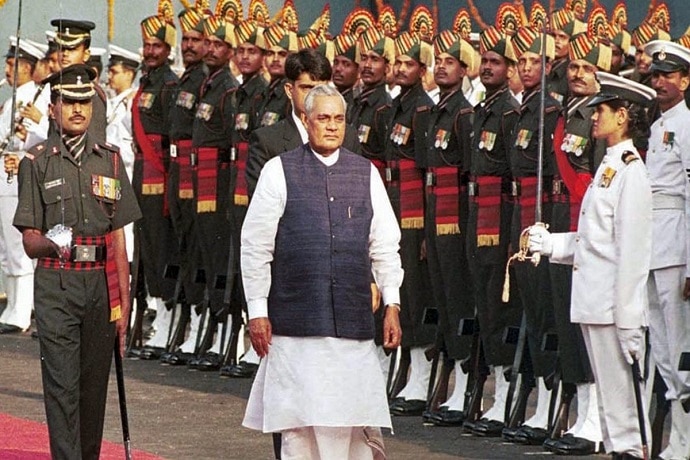A Balakot that wasn’t: Vajpayee planned strike post Parliament attack in 2001

A Prime Minister to Remember written by former Navy Chief Admiral Sushil Kumar reveals the aftermath of the brazen terrorist attack on the Indian Parliament and the ill-timed Operation Parakram.
Prime Minister Atal Bihari Vajpayee had authorised a Balakot-type air strike on a Pakistan-army run terrorist training camp, a new book reveals. This strike was planned in retaliation for the brazen attack by Jaish-e-Mohammed terrorists on India’s Parliament. While the fact that the Vajpayee did consider an airstrike after the December 13, 2001 attack, have been reported in the past, details have never been revealed by key players in the loop.
A Prime Minister to Remember written by former Navy Chief Admiral Sushil Kumar, released in the Capital on June 28. The book reveals how soon after the five JeM terrorists struck at Parliament, the three armed forces chiefs hurriedly met the Defence Minister George Fernandes and National Security Adviser Brajesh Mishra in the army operations room. ‘Discussions were focused on delivering a swift riposte which was the need of the hour and the contingency plan selected was to destroy a huge Pakistan army training camp for terrorists located across the LoC and deep inside Pakistan Occupied Kashmir (PoK).’

While Admiral Kumar did not mention how the Indian armed forces planned to carry out the strike, an India Today story at the time revealed that Gwalior-based Mirage 2000 fighter jets were to have been the platform of choice. A last-minute intelligence report, Admiral Kumar reveals, scuppered the strike. The Pakistan army relocated the camp between a school and a large hospital complicating the strike. Frantic consultations took place within India’s security set up.
Plans for the swift riposte were abandoned since striking the selected target would have resulted in ‘unacceptable collateral damage’. The government instead stumbled into Operation Parakram, the ten-month deployment of the armed forces along the Line of Control.

Mobilisation orders were given to the three service chiefs who were summoned the following day to the PM’s residence at 7, Lok Kalyan Marg (formerly 7, Race Course Road) for a breakfast meeting. Admiral Kumar, who was also then Chairman Chiefs of Staff Committee POA, was distinct from the nine-month Operation Parakram that actually followed. In the meeting, it became apparent that Vajpayee was viewing the mobilisation of the three armed forces purely as a coercive strategy and nothing more.
‘Since it had been a rushed decision, the Prime Minister may have only later realised that the full-scale mobilisation which had been ordered could have serious implications for the armed forces.’ The three chiefs later met up with the Defence Minister George Fernandes who had, in Admiral Kumar’s words ‘practically nothing to say at all and vaguely talked of ‘coercive diplomacy’ as the new avatar of the original Operation Parakram.’
The armed forces waited from January to October 2002 for a green signal which never came and ended up losing 798 soldiers during the deployment. Parakram was an unqualified disaster. Admiral Kumar says it led to ‘massive dislocation of armed forces’ personnel and infrastructure with unjustified wastage of combat resources since the conflict did not take place—all of this without any clear military aim or objective.’
(Courtesy of Mail Today)

